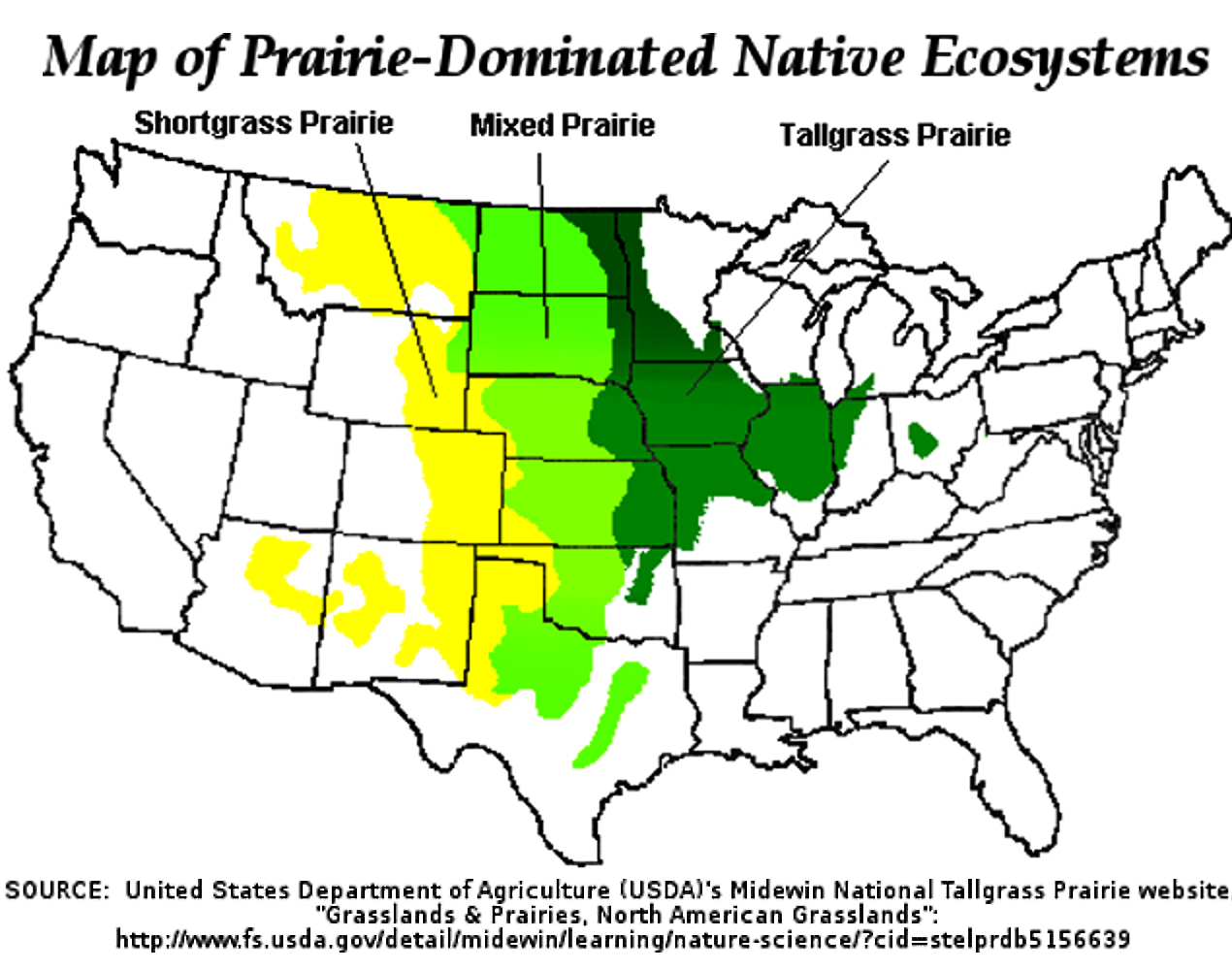Below constitutes a rough draft version of this particular history section. The heavily-upgraded textbook version will be available soon.
Pre-Contact; A Brief History
The Lakota inhabited a large portion of the northern Great Plains. The Crow were directly to the west, Mandan & Hidatsa to the north, & Ponca, Omaha, & Pawnee to the south.
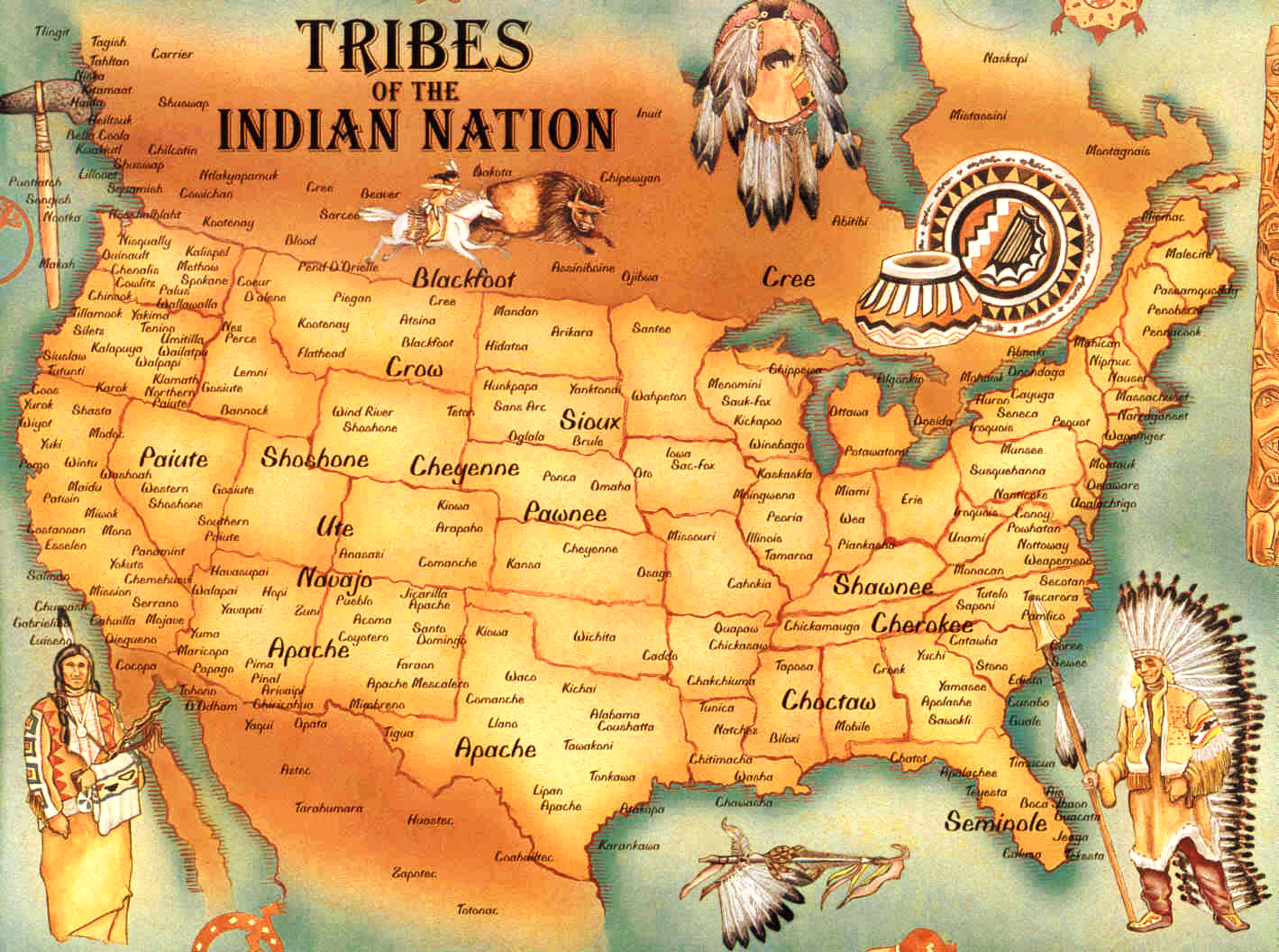
Across more than 750,000 square miles, the heartland of the continent was a vast sea of prairie grass, interrupted here & there by mountainous terrain, & winding, forested river bottoms.
Photos of Prairie:
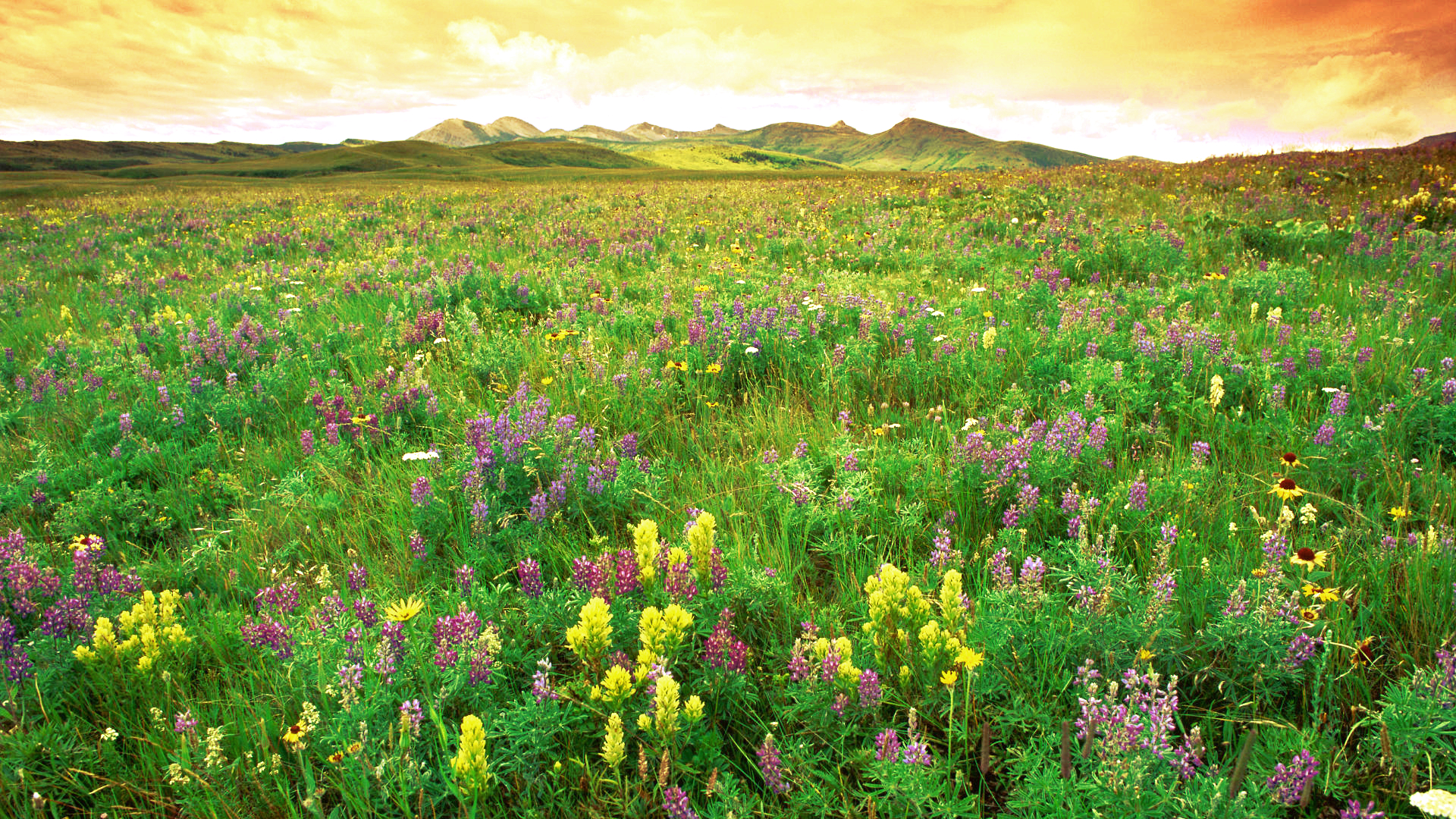
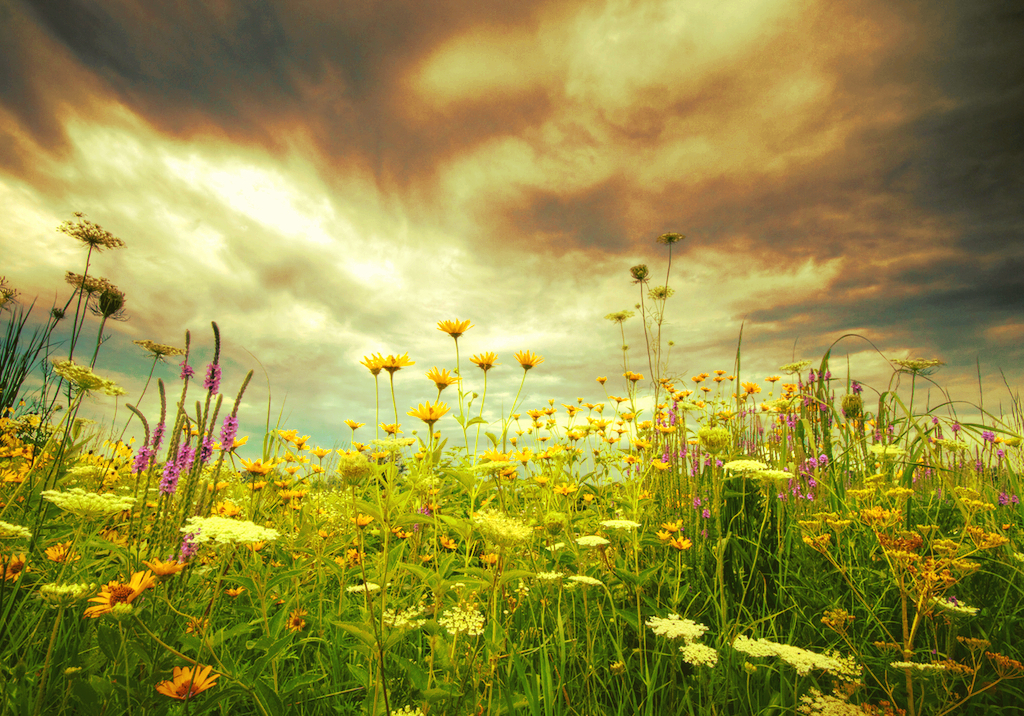
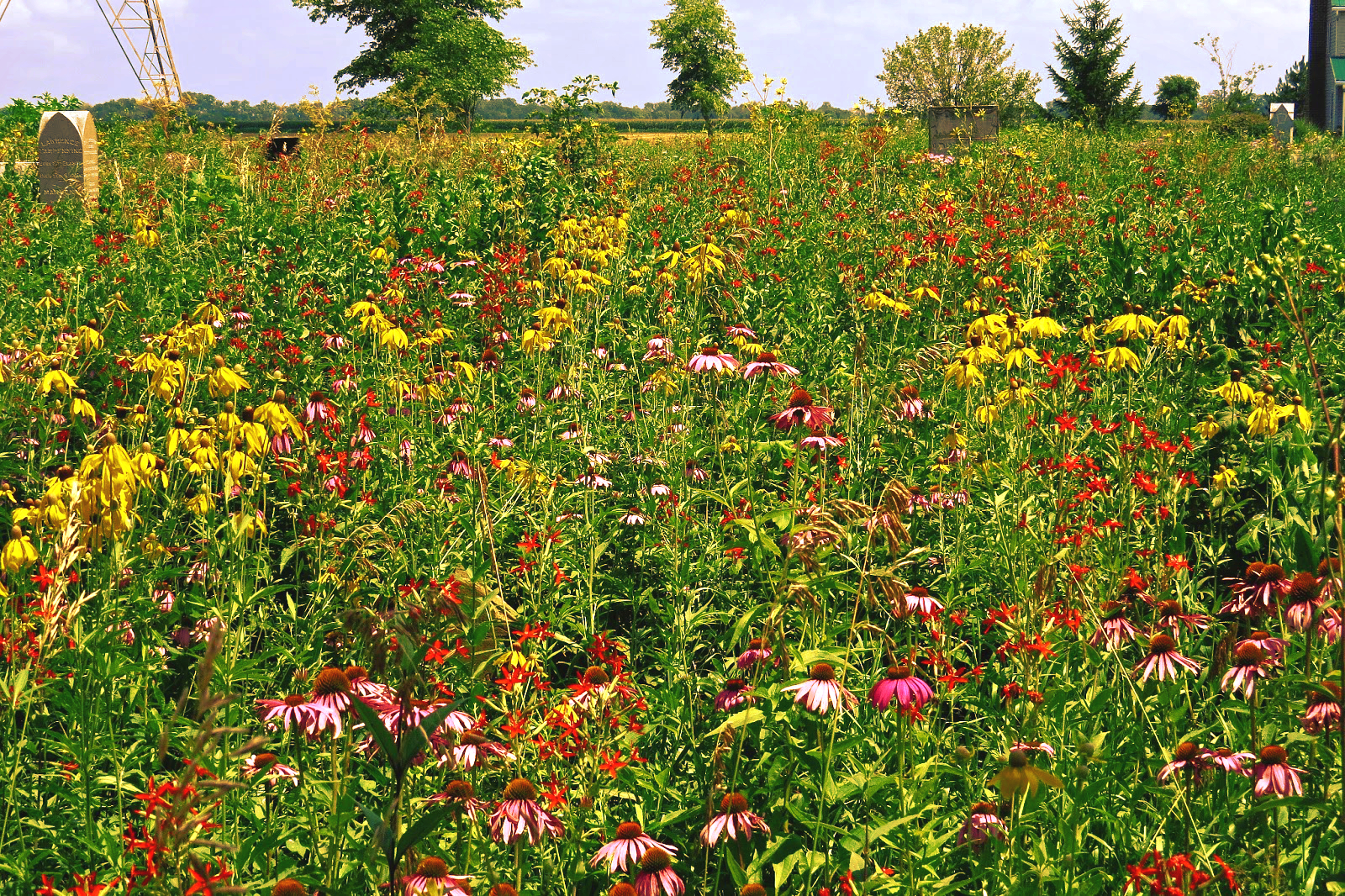
The native tallgrass prairie of the Great Plains is a fire-dependent ecosystem characterized by tall grasses (up to 10 feet tall), & deep, rich soils. Tallgrass prairie once covered parts of 14 states in the region now known as the Midwest.
Before the arrival of European settlers, native people set fires in late summer & fall to provide habitat for animals such as bison, elk, & deer, to reduce danger of wildfire, to increase ease of travel, & also to increase visibility & safety. Fire & prairie plants are mutually dependent one another. Without fire, the grasses & other fire-adapted prairie plants would eventually become shaded out by trees. Fire stimulates growth of prairie plants by removing dead plant material, allowing sunlight to penetrate to the black earth that follows the burn in order to reach the new shoots emerging from the ground. Fire promotes the germination of many prairie plant seeds by removing the seed coat. Frequent fires prevent trees from becoming established. Without the flammable grasses of the prairie, the fire would not be able to move across the landscape.
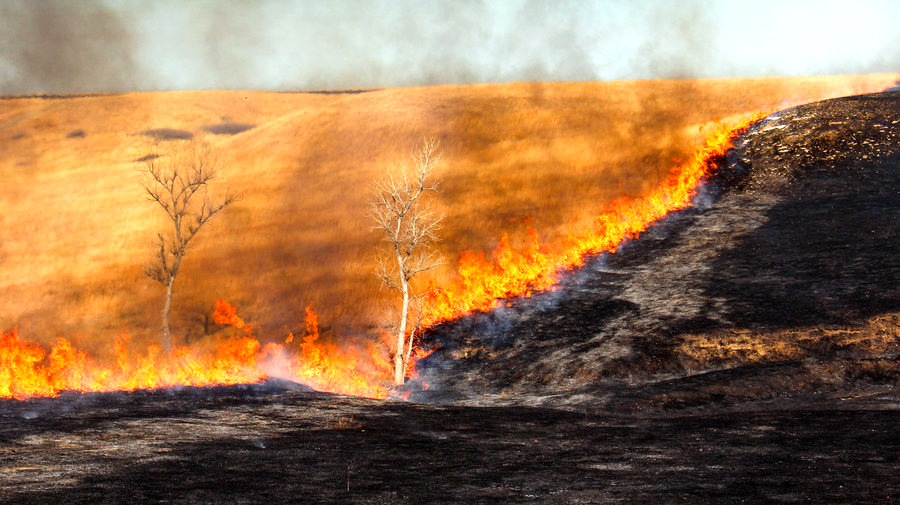
Grazing by large mammals such as bison & elk also helped maintain the plant life in the prairie. The grazing process stimulates the growth of many prairie plants, particularly grasses. By selectively grazing on grasses, bison & elk promoted the growth of other plants that were exposed to more sunlight as the grasses were kept short.[1]
Buffalo, Mainstay Subsistence & for The Plains Tribe
Tatanka, or “buffalo” in English, is split into two subspecies: the wood bison or mountain bison {Bison bison athabascae} in the boreal forests of what is now Canada, & the plains bison {Bison Bison Bison} of the prairies extending from Canada to Mexico. The grazing & trampling of the prairie bison helped maintain the ecology of the Great Plains as strongly as the periodic prairie fires which were central to the life cycle of American Indians of the Great Plains.[2]
Original Distribution Map of Holocene Bison (light tan), Wood Bison (medium tan), & Prairie Bison (brown)
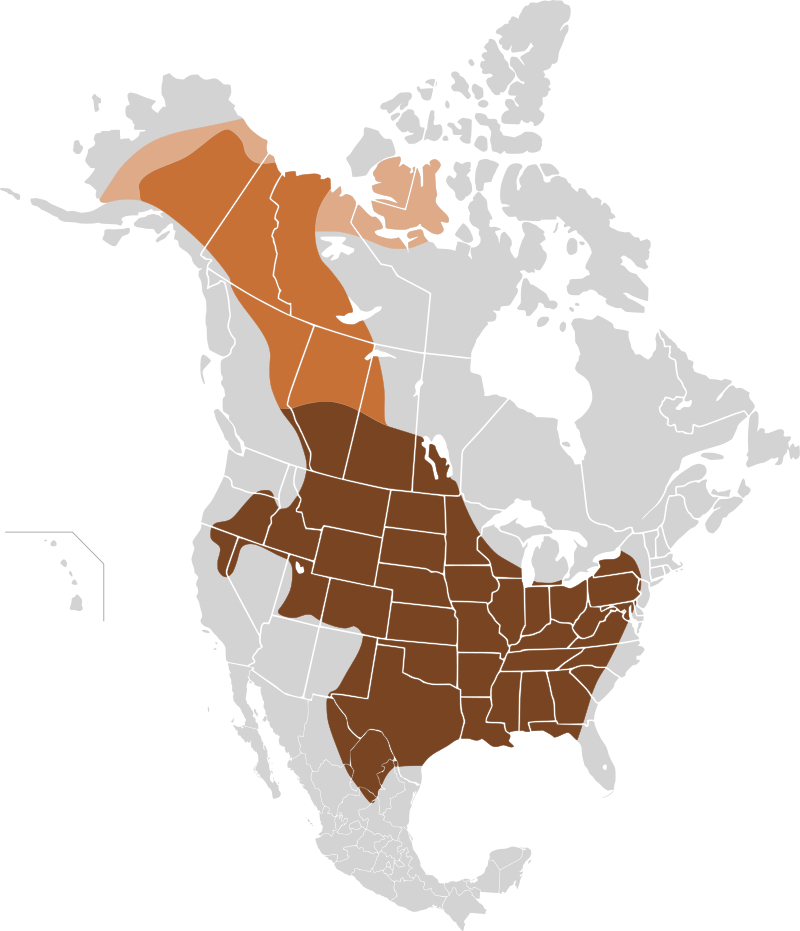
Following the annual September hunting season, every part of the animal was utilized by the Lakota and many other Native American tribes. The hide was used to cover tipis, & also as clothing for everything from robes to moccasins.
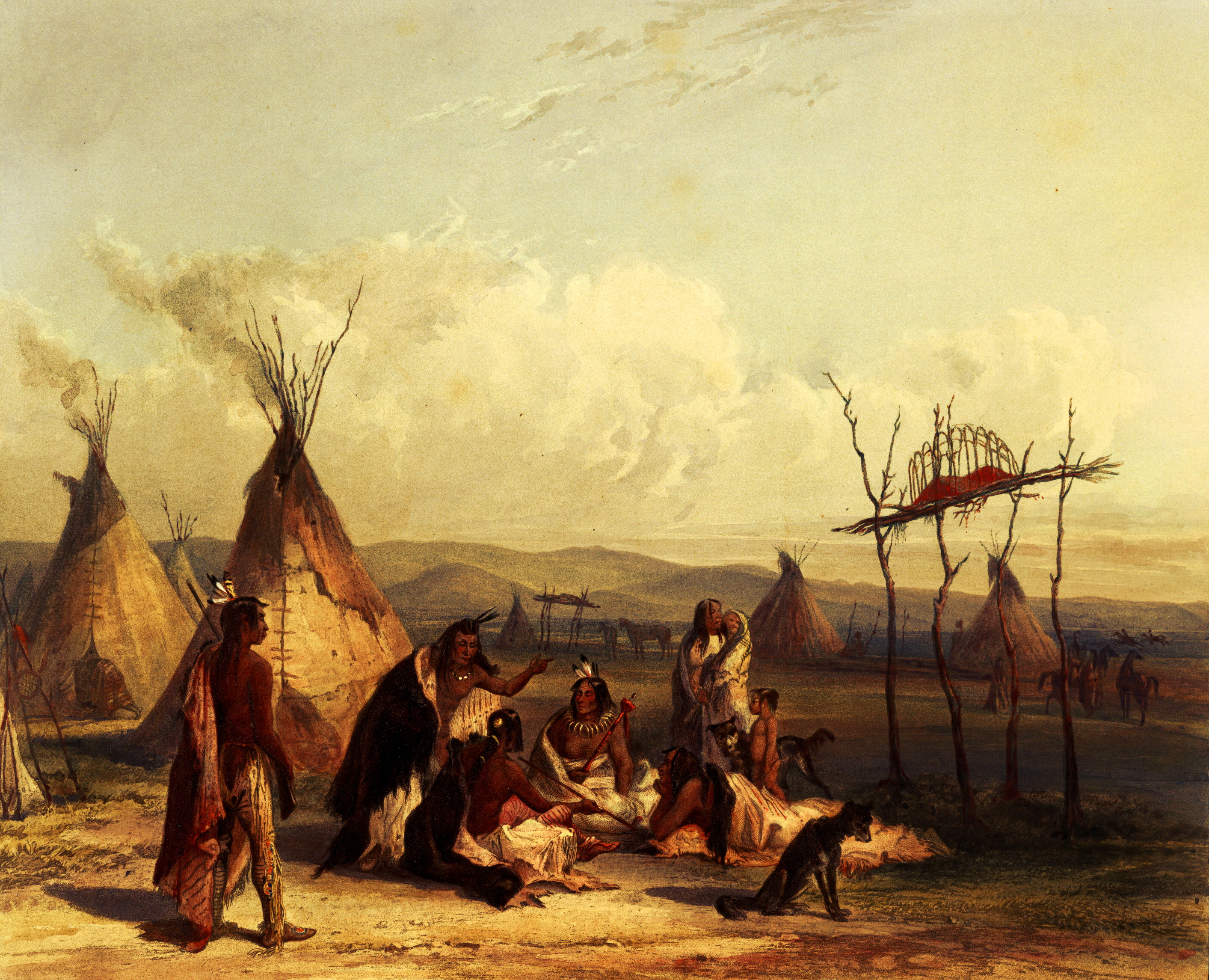
Tatanka provided everyday utensils such as sewing needles & thread (from sinew), awls, bowls, & much more. In this way, the buffalo is considered a true relative for the people— making wild natural living for the tribes both possible— and abundant.[3]
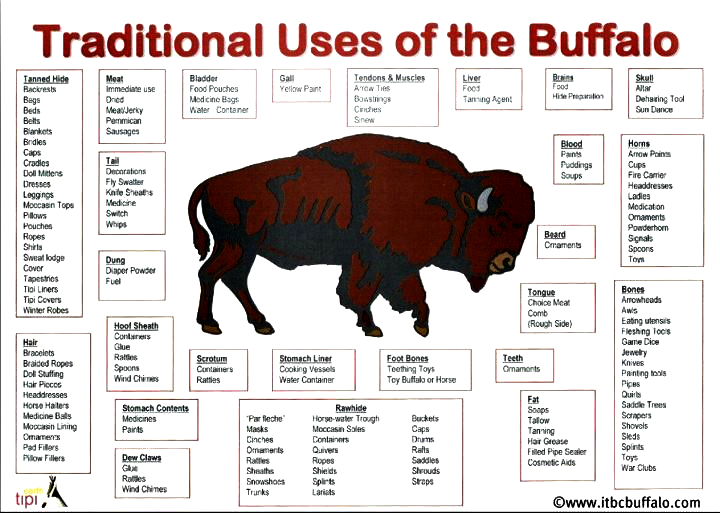
Because of its importance, a buffalo symbol (lock of hair, rib bone, etc.) or buffalo skull is present in all sacred Lakota rituals. It stands as a reminder of this great animal which gives completely of itself & brings life to the people. The buffalo is a symbol of self-sacrifice, giving until there is nothing left, & this is imitated & honored by the people in the Great Plains Tribes: to be generous & to give what you have to others in need, or to honor them, is the most highly respected way of acting or being.[4]
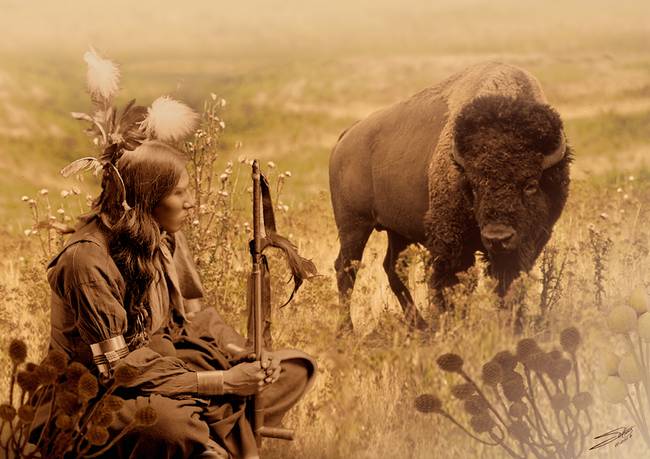
The Mystic Elk
Elk {cervus elaphus} were numerous throughout the Great Plains & Badlands of North Dakota, but pressure from over-hunting & human development forced them from much of their former range; they were gone from the region by the late 1800s.[5] Elk are revered & honored by the Lakota-speaking people & many other Native American tribes. Besides being a mainstay source of food, clothing, & countless other resources- much like the buffalo- the Lakota, for example, associate the bull elk with the power to attract females. Observing his behavior in nature, the people noted the male elk’s amorous activities that successfully lured female elk to him.[6]
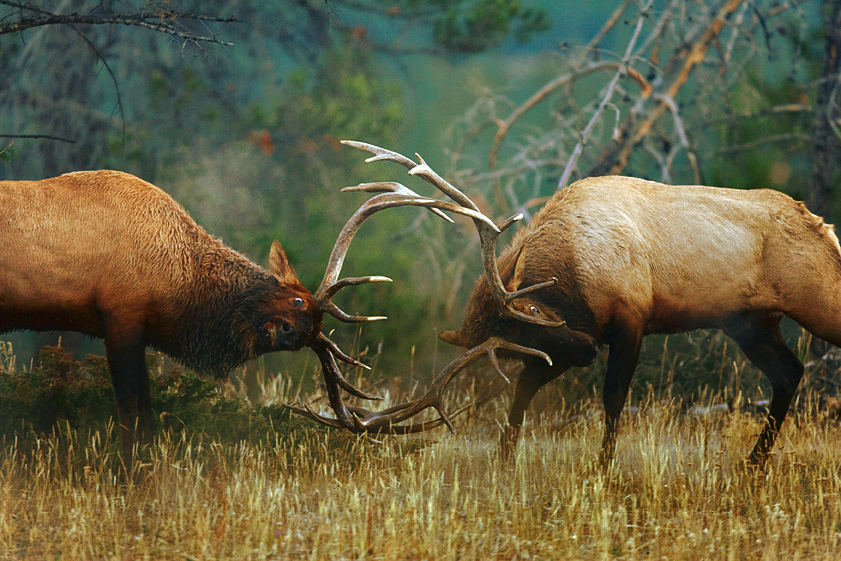
Since the powers of animals are believed to be available to humans, certain men in the past became associated with elk through dreams, & received supernatural abilities to attract women. Understandably, the elk was a favorite animal among young men.
Note:Theodore Roosevelt National Park reintroduced elk to the North Dakota Badlands on March 13, 1985. Since then, the elk population has grown significantly due to productive forage, favorable habitat, & the absence of natural predators.
Although Roosevelt named his Elkhorn Ranch after the interlocking antlers found at the site, living animals were hard to find. “This stately and splendid deer, the lordliest of its kind… is now fast vanishing,” he wrote in the 1880s. By the end of the century, elk were no longer found in the Badlands.
In an effort to reestablish the native ecology, Theodore Roosevelt National Park reintroduced elk to the South Unit in 1985. The original animals were transferred from Wind Cave National Park in South Dakota.[7]
Lakota-Dakota-Nakota: Yearly Respite at Arkansas Hot Springs
The Lakota were ancient enemies of the Fox & the Anishinabe. Seasonal warfare was constant in the area west of the Great Lakes, however the Lakota would travel to the Arkansas’ hot springs to gather with people of several other tribes to hunt, forage, & enjoy healing waters. Even when people were at war, individuals of opposing tribes came together at the hot springs in peace & safety.
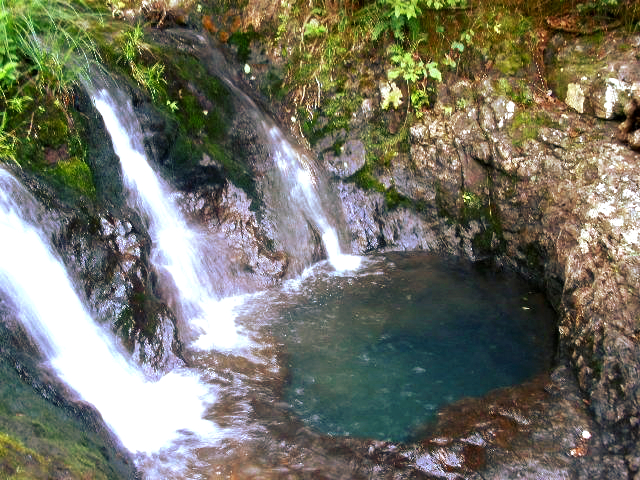
Four Lakota Values
“Wacantognaka”, the Lakota word for Generosity
To contribute to the well-being of one’s people & all life by sharing & giving freely. This sharing is not just of objects & possessions, but of emotions like sympathy, compassion, & kindness. It also means to be generous with one’s personal time. The act of giving & not looking for anything in return can make you a better person & make you happy.
Giveaways have always been part of Lakota society. At important events, the family gathers their belongings & sets them out for any person in the community to take. “What you give away, you keep; what you keep you lose” is an old Lakota saying.
No matter what race, nationality, or tribe, people have found when you reach out to help others in your community, you become less focused on yourself, & instead more in harmony with the world.
“Wotitakuye”, Kinship
One of the important values coming from the tiyospaye— the extended family. It includes the ideas of living in harmony, belonging, relations as the true wealth & the importance of trusting in others. It is one of the values that made the tiyospaye work.
Family is the measure of your wealth. They will support you in good times & in bad times. For a Lakota, you belong to a tiyospaye through birth, marriage or adoption. Your family even extends out to your band & the whole Lakota nation. Whenever you travel somewhere, you can expect to be welcomed & supported as if you were in your own immediate family.
In traditional Lakota society, wotitakuye was a little different from what it is today. The Lakota were a warrior & hunting society. This meant the men might not return when they went out to fight or to hunt. So, the network of relatives ensured the women, children & elders would not be left alone. In these times, generosity was the way of life, & resources were meant to be shared.
“Wacintaka”, Fortitude
Facing danger or challenges with courage, strength, & confidence. Believing in oneself allows a person to face challenges. Fortitude includes the ability to come to terms with problems, to accept them, & to find a solution that is good for everyone.
One of the first lessons a Lakota child learned in the old days was self-control & self-restraint in the presence of parents or adults. Mastery & abilities came from games & creative play. Someone more skilled than oneself was viewed as a role model, not a competitor. Striving was for achieving a personal goal, not for being superior to one’s opponent. Success was a possession of the many, not of the few.
Fortitude may require patience, perseverance, & strength of mind in the face of challenges. It involves having confidence in oneself & the courage to continue even when all odds are against you. Fear still exists, but you proceed in spite of fear.
“Woksape”, Wisdom
The knowledge and wisdom of old people is very important for the well-being of the Lakota people. This is understood to be something sought and gained over the course of one’s entire life, but not just by adding years to one’s life.
Wisdom has to do with understanding the meaning within natural processes and patterns. It means knowing the design and purpose of life.
It also has to do with understanding & living the spiritual values and beliefs upon which one’s culture is founded and being able to share these with others. Wisdom means being able to incorporate the sacred way of life into one’s own life and to respect and honor all life. It means being open to the dreams of the day and the night when spiritual direction may come to a receptive child or adult seeking wisdom.[8]
Sacred Tribal Roles:
Below is a list of traditional tribal roles which are recognized within the Great Plains tribes and many other tribes- though each tribe has unique aspects & insights as to “what these roles mean within their tribe”. Below each listed “tribal role” includes one or two examples of historic individuals who are recognized as such, including a bit about each of them.
A Wičháša Wakȟáŋ or “Holy Man”:
One who is wise- one who knows and has power with the spirits- and can communicate with them. He knows the songs and the ceremonies, & can interpret visions. He can tell people what the spirits expect of them, predict the future, speak to nature… to everything on earth. When a holy man uses an object in a ceremony, that object becomes filled with- for lack of an actual English term– “spirit.” The Lakota use the term tonwan or ton to describe it. Ton is the power to do the supernatural.
Heȟáka Sápa aka “Black Elk” (1863 –1950):
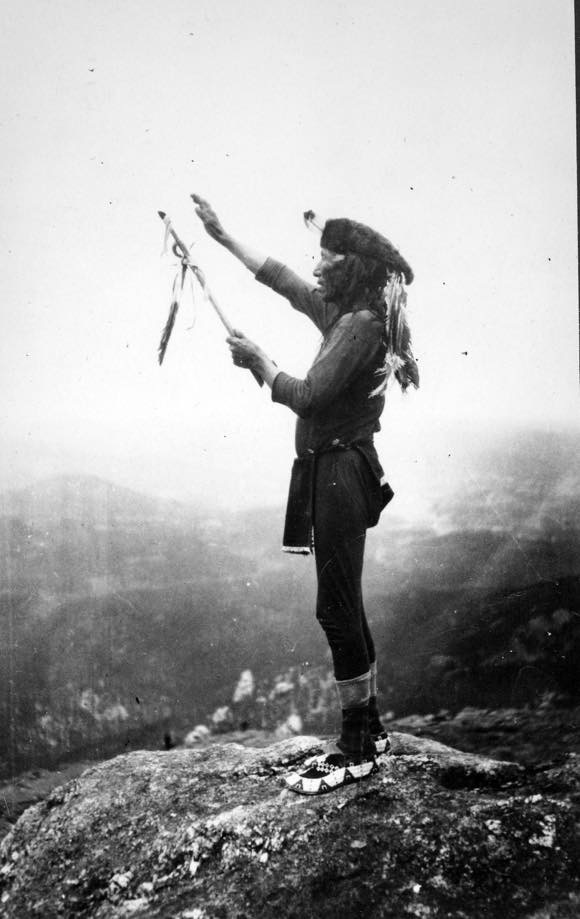
Rattle, smoke, feather… once anything has tonwicasa wakan- it has the power of “wakan” (sacred, powerful) beings. A Wičháša Wakȟáŋ will keep sacred items in a Wasicun. Many people would mistakenly call this a “medicine bag,” which is incorrect because there is no “medicine” in it; it is for wakanton items to be kept powerful [9]
Black Elk’s Pipe Bag:
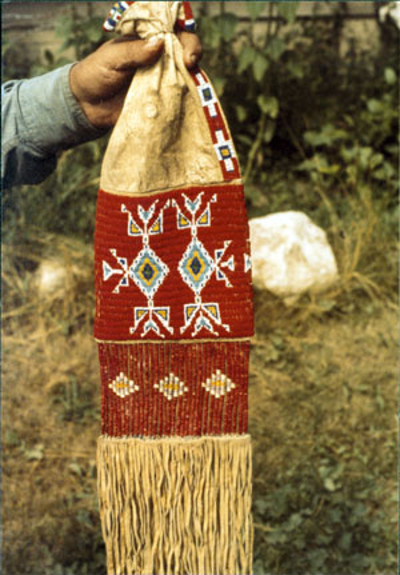
Note: The above photograph is of Thomas Yellowtail holding a sacred pipe bag that originally belonged to Black Elk. Black Elk gave the pipe bag to Joseph Brown in 1947, & Brown gave it to Frithjof Schuon in 1949, who then gave it to Yellowtail in 1953. It remained one of Yellowtail’s most prized possessions until his death in 1993.
The Wičháša Wakȟáŋ Black Elk had many visions, many of which were passed to humanity through his book, “Black Elk Speaks“. In the book, an ancient & sacred story that has been passed through all the tribes was passed to the world, a story about Pte Ska Win, or “White Calf Buffalo Woman”, & how she brought “the first pipe” to the people:
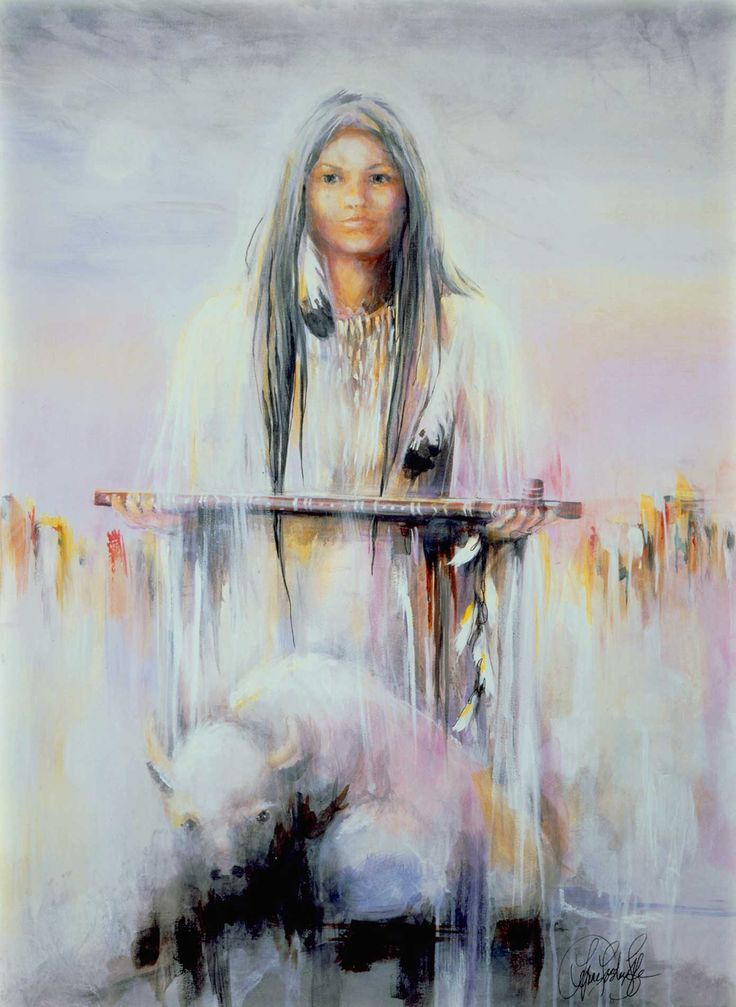
How “The Pipe First Came to Us“, Black Elk Speaks:
“A very long time ago, they say, two scouts were out looking for bison, & when they came to the top of a high hill & looked north, they saw something coming a long way of, & when it came closer they cried out, “It is a woman!“, & it was. Then one of the scouts, being foolish, had bad thoughts & spoke them, but the other said: “This is a sacred woman; throw all bad thoughts away.” When she came still closer, they saw that she wore a fine white buckskin dress, that her hair was very long & that she was young & very beautiful. And she knew their thoughts & said in a voice that was like singing: “You do not know me, but if you want to do as you think, you may come.“ And the foolish one went; but just as he stood before her, there was a white cloud that came & covered them. And the beautiful young woman came out of the cloud, & when it blew away the foolish man was a skeleton covered with worms.
Then the woman spoke to the one who was not foolish: “You shall go home & tell your people that I am coming & that a big tepee shall be built for me in the center of the nation.” And the man, who was very much afraid, went quickly & told the people, who did at once as they were told; & there around the big tepee they waited for the sacred woman. And after a while she came, very beautiful & singing, & as she went into the tepee this is what she sang: “With visible breath I am walking. A voice I am sending as I walk. In a sacred manner I am walking. With visible tracks I am walking. In a sacred manner I walk.” And as she sang, there came from her mouth a white cloud that was good to smell. Then she sang again & went out of the tepee; & as the people watched her going, suddenly it was a white bison galloping away & snorting, & soon it was gone.”
Black Elk: “This they tell- & whether it happened so or not I do not know- but if you think about it, you can see that it is true. Now I light the pipe, & after I have offered it to the powers that are one Power, & sent forth a voice to them, we shall smoke together. Offering the mouthpiece first of all to the One above- so I send a voice: Hey hey! Hey hey! Hey hey! Hey hey! Grandfather, Great Spirit, you have been always, & before you no one has been. There is no other one to pray to but you. You yourself, everything that you see, everything has been made by you. The star nations all over the universe you have finished. The four quarters of the earth you have finished. The day, & in that day, everything you have finished. Grandfather, Great Spirit, leave close to the earth that you may hear the voice I send. You toward where the sun goes down, behold me; Thunder Beings, behold me! You where the White Giant lives a power, behold me! You where the summer lives, behold me! You in the depths of the heavens, an eagle of power, behold! And you, Mother Earth, the only Mother, you who have shown mercy to your children!
Hear me, four quarters of the world- a relative I am! Give me the strength to walk the soft earth, a relative to all that is! Give me the eyes to see & the strength to understand, that I may be like you. With your power only can I face the winds. Great Spirit, Great Spirit, my Grandfather, all over the earth the faces of living things are all alike. With tenderness have these come up out of the ground. Look upon these faces of children without number & with children in their arms, that they man face the winds & walk the good road to the day of quiet. This is my prayer, hear me! The voice I have sent is weak, yet with earnestness I have sent it. Hear me! It is finished. Hechetu aloh! (So it is!) Now, my friend, let us smoke together so that there may be only good between us.“[7]
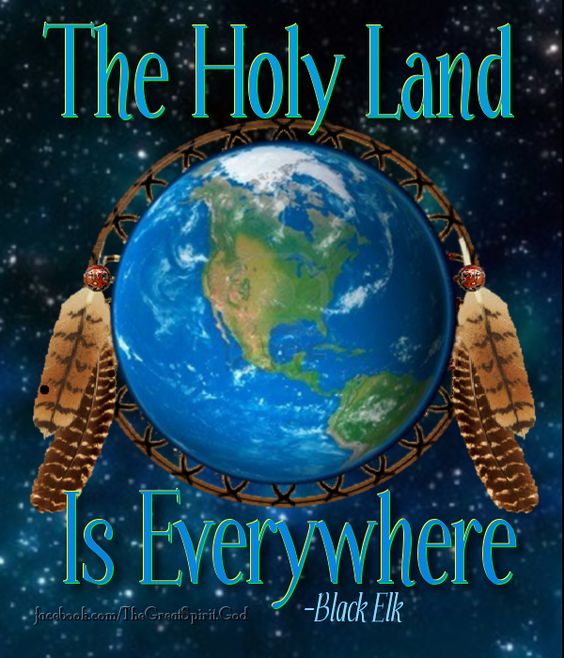
Elk Head, Keeper of The Pipe of Legend:
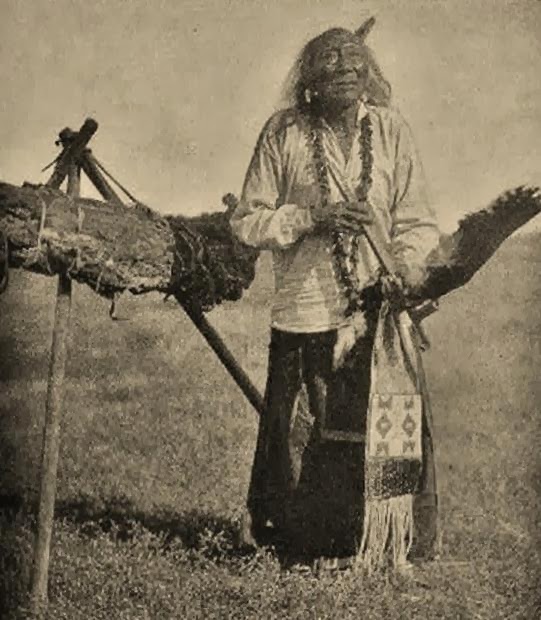
As several of the Keepers of the Sacred Pipe were known as Elk Head (in addition to their original name), there is a potential for confusion in attempting to identify which one had the pipe at the time of the Little Bighorn.
The Elk Head photographed by Curtis (posted above) said that he did not receive the sacred White Buffalo Calf Pipe until about a year after the Little Bighorn. He served as the Keeper until his death in 1914.
When Elk Head died in 1916, the White Buffalo Calf Pipe Bundle went to his daughter, Martha Bad Warrior, aka Red Eagle Woman, (b. 1854 – d. 1936).
When Martha Bad Warrior died in 1936, the White Buffalo Calf Pipe Bundle went to her son, Ehli Bad Warrior, (b. 1882 – d. 1959).
When Ehli Bad Warrior died in 1959, the White Buffalo Calf Pipe Bundle went to his sister, Lucy (Bad Warrior) Looking Horse, (b. 1891 – d. 1966).
Just before Lucy (Bad Warrior) Looking Horse died in 1966, she chose to pass over her son, Stanley Looking Horse, and pass the White Buffalo Calf Pipe Bundle to then 12 year old grandson, Arvol Looking Horse, (b. 1954) the current Keeper.[10]
Frank Fools Crow (1890-1989):

Frank Fools Crow, ceremonial chieftain of the Teton Sioux, was a recognized Lakota Holy Man who worked hard for his people until his death. He believed that the only way to save humanity was for people of all races to work together.

Frank Fool Crow was very respected among the traditional Lakota on his reservation in Pine Ridge, South Dakota. He went to AIM (American Indian Movement) in the early 70s to ask their help in fighting the corrupt tribal government. He was also one of the occupiers at Wounded Knee later in that same conflict. He was a spiritual healer who believed that his power was not his own, but only passed through him; a concept he explained as being a “hollow bone”. Fools Crow was also instrumental in making the Sun Dance, an important ceremony to the Sioux, legal once more.
In August 1975, thirty activists, including Fools Crow, traveled to Washington D.C. to discuss the 1868 Treaty, sovereignty, and the continuing violence and civil rights violations. On September 5, Grandfather Fools Crow gave the opening prayer for the United States Senate:
“In the presence of this house, Grandfather, Wakan Tanka,
and from the direction where the sun sets, & from the direction of cleansing power, & from the direction of the rising, and from the direction of the middle of the day.
Grandfather, Wakan Tanka, Grandmother, the Earth who hears everything, Grandmother, because you are woman, for this reason you are kind, I come to you this day to tell you to love the red men, & watch over them, & give these young men the understanding because, Grandmother, from you comes the good things, good things that are beyond our eyes to see have been blessed in our midst for this reason I make my supplication known to you again.
Give us a blessing so that our words & actions be one in unity, & that we be able to listen to each other, in so doing,
we shall with good heart walk hand-in-hand to face the future.
In the presence of the outside, we are thankful for many blessings. I make my prayer for all people, the children, the women & the men. I pray that no harm will come to them, & that on the great island, there be no war, that there be no ill feelings among us. From this day on may we walk hand in hand. So be it.“
Another photo of Frank Fool’s Crow:
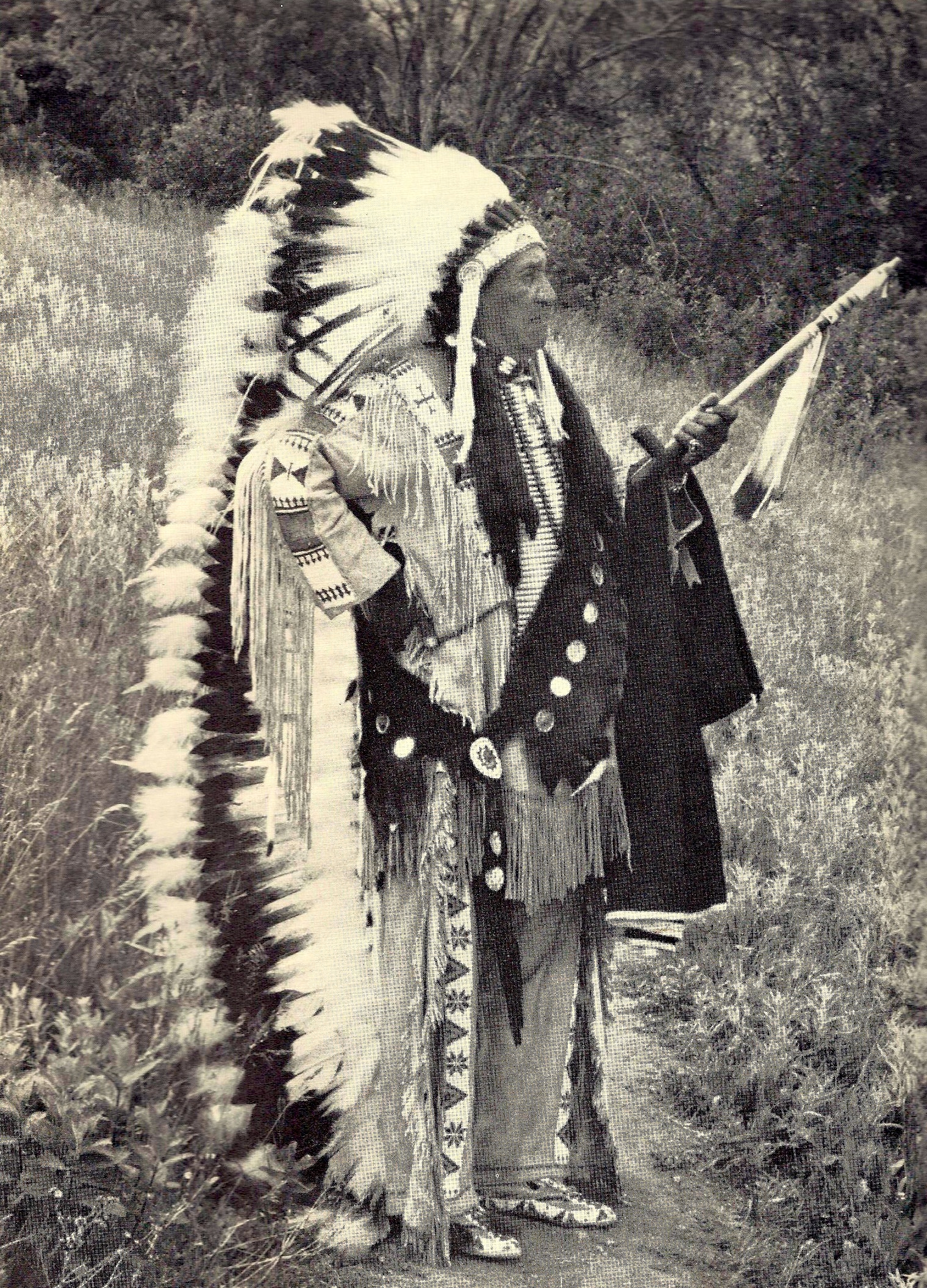
Thomas E. Mails wrote two books based on interviews with Fools Crow. The first, Fools Crow, tells Frank Fool Crows life story, while the second Fools Crow: Wisdom and Power delves more into the spiritual beliefs & ceremonies that Fools Crow was involved with.
Medicine Man & Medicine Woman:
A man of medicine among the Lakota, a “doctor,” is called a pejuta wacasa, which is not to be confused with wicasa wakan- a holy man. So one, the pejuta wacasa, tends to the physical being, while the other, wicasa wakan, tends to the spiritual.
A wičháša wakȟáŋmedicine man or medicine woman is a traditional healer of both traditional plant medicines and spiritual ceremonies. A traditional medicine person could be found in the mide-wiigiwaam (Ojibwe word for “medicine lodge”). In most tribes, medicine elders are prohibited from advertising or introducing themselves as such.[11]
Photo of Brulé Sioux Medicine Man Tatanka Witko (1849 – 1909) “Fool Bull”:
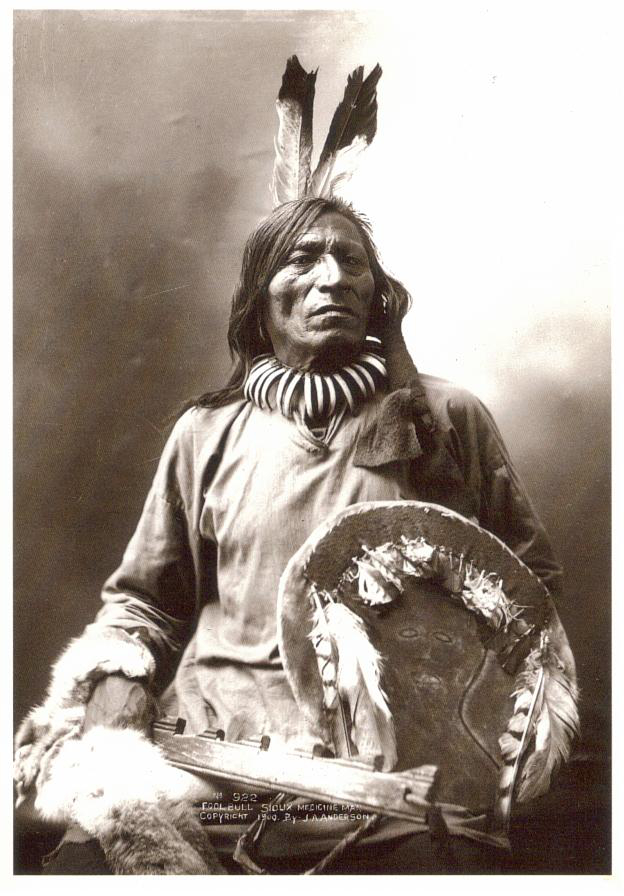
Above photo: According to Swedish-American photographer John A. Anderson, who took this photo in 1900 A.D., the war shield Fool Bull is “the one he carried in the Custer battle“.
Allen Chronister described the photograph in Whispering Wind Magazine (Nov-Dec 2007): “His shield may be an actual old war shield, it at least has a buckskin cover & not a muslin one like so many created during this period. Across his lap is a serrated whip made from a section of milled board, which he is holding by a fox or coyote skin wrist strap. This whip could have been related to his status as a Grass Dance whip man or to his membership in a warrior society. His claw necklace seems to be made of claws made from some material such as hoof or antler.”
According to Mary and Leonard Crow Dog, whose family was related to the Fool Bulls: “Old Grandpa Fool Bull was the last man to make flutes and play them, the old-style flutes in the shape of a bird’s head which had the elk power, the power to lure a young girl into a man’s blanket.”[12]
“Good Road Woman”, Medicine Woman:
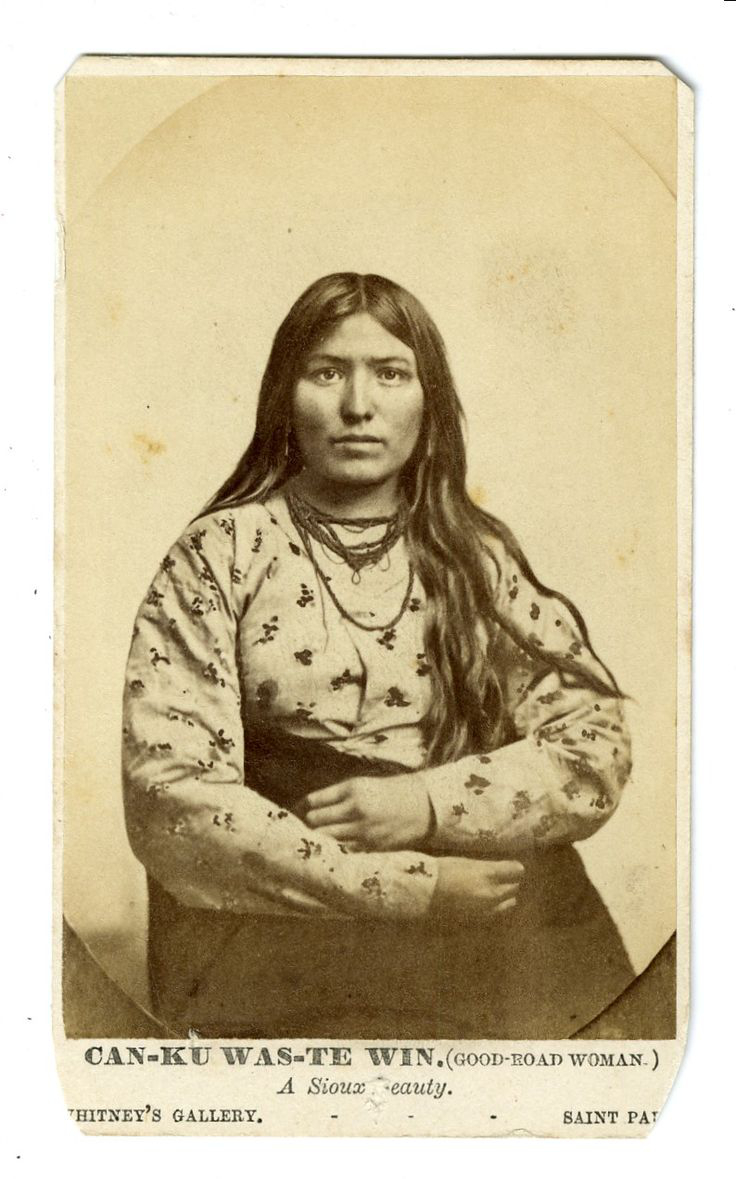
A list of some publications regarding “traditional edible, medicinal, & utility uses of prairie plants”:
“Medicinal Wild Plants of the Prairie; An Ethnobotanical Guide” by Kelly Kindscher
“Medicinal Plant Traditional Uses” by Doris Ames
“Culturally Significant Plants; Natural Resources Conservation Guide“, United States Department of Agriculture (“USDA”)
“Native America’s Pharmacy on the Prairie” By William C. Handel and K.C. Compton , Mother Earth Living
Note: Above are some publications planned for use in continuing to build The Wild Living Skills Database & Smartphone App.
“Weya Wakan”, Sacred Woman:
Much like early European knights who practiced chivalry, honoring the sacred & unique, necessary-for-life roles of comfort, care-giviing, wisdom, & grace that women exemplify are among the many many reasons that the traditional way of the Lakota-Dakota-Nakota, & all Great Plains tribes, is to honor, respect, & help provide for the women who bless our lives:
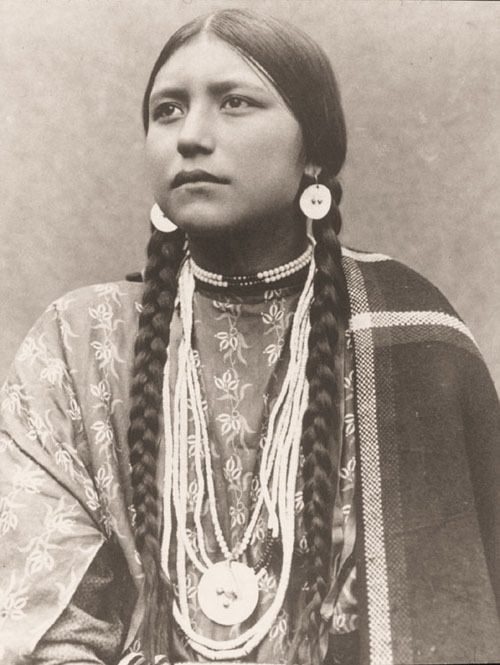
Young Woman:
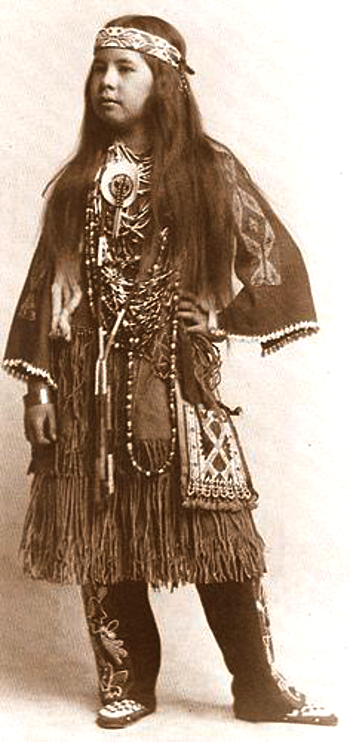
Many Horses (daughter of Sitting Bull and Snow On Her), with her son – Hunkpapa Lakota – before 1897
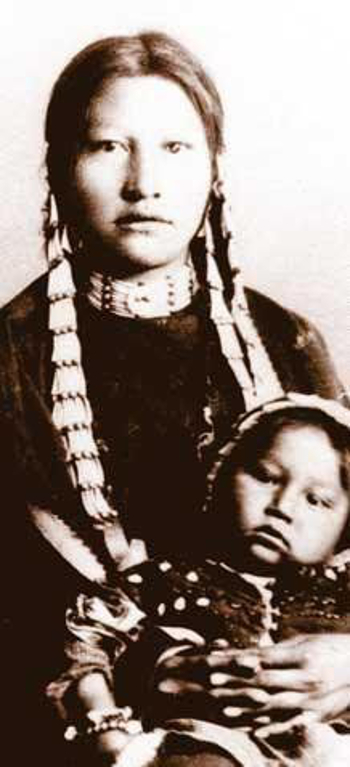
Baby in Papoose:
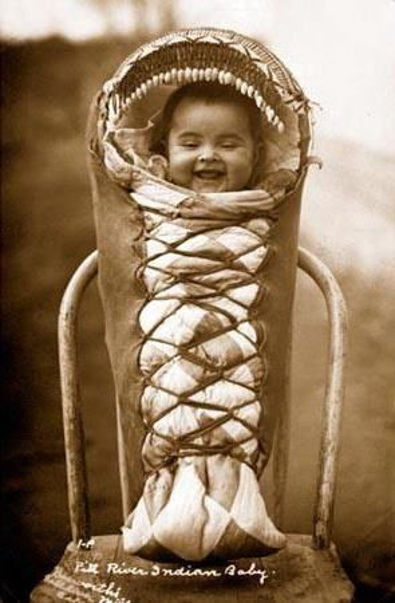
Warrior:
The warrior is the one who is willing to put his body in harm’s way to protect the tribe: the selfless one, & the one who spreads the wisdom of the elders in his quest to maintain peace & respect among the tribe. The mere presence of a warrior can evoke respect among everyone throughout the tribe. Many warriors will receive special honors if fulfilling other important tribal roles following their stoic roles for years, or after certain accomplishments or visions, as warriors.
Tatanka Ska aka “Richard White Buil”, Oglala Lakota, 1899:
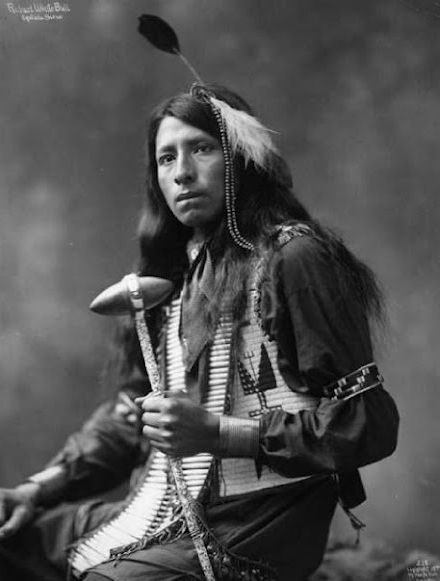
Head Soldier:
One who trains & teaches the warriors & those who must fight.
Ta-Tsan-Op-Ki-An, “Flying Pipe” (Head Soldier of the Yankton Sioux, Dakota)
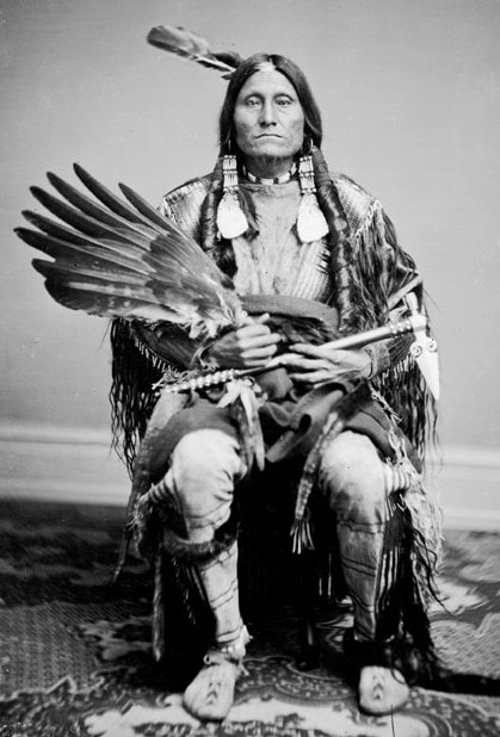
War Chief:
When the last attempt at peace fails, & there is no other option, & either the tribe will be exterminated or they must physically defend themselves, then it is the War Chief who leads the other warriors, whether from the physical realm or the spiritual, as needed.
“Ité Omáǧažu”, or “Rain-In-The-Face” (1835 – 1905) in English, wearing a bear claw necklace
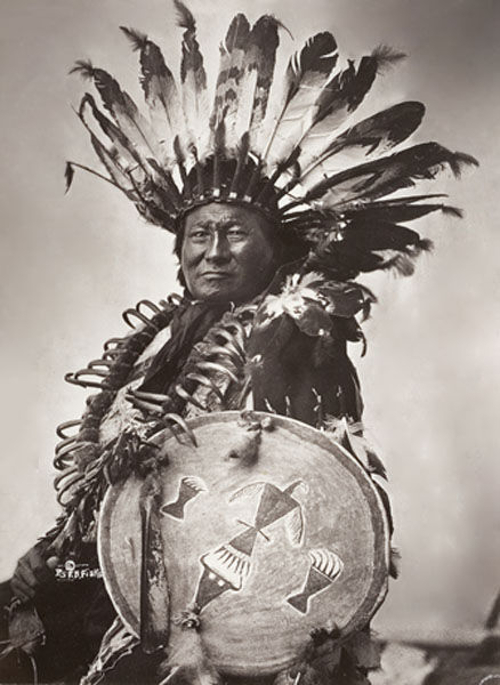
Rain-in-the-Face’s mother was a Dakota related to the band of famous Chief Inkpaduta, however Rain-in-the-Face identified with the Hunkpapa Lakota was among the Indian leaders who defeated George Armstrong Custer and the U.S. 7th Cavalry Regiment at the 1876 Battle of Little Big Horn following a vow of vengeance he had sworn against the man years before.
Chief:
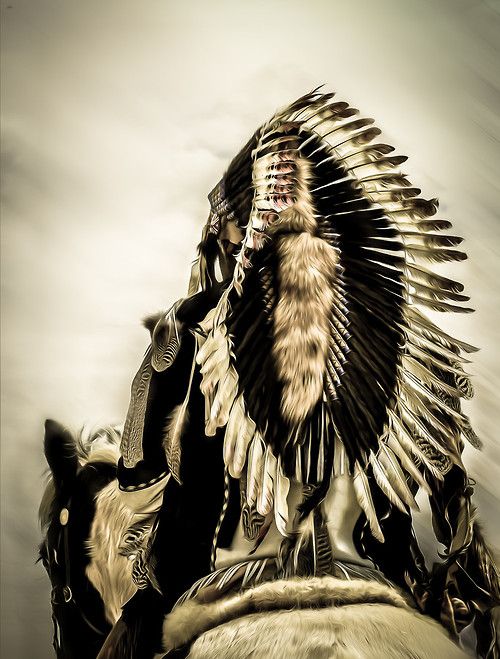
Chief Sitting Bull:
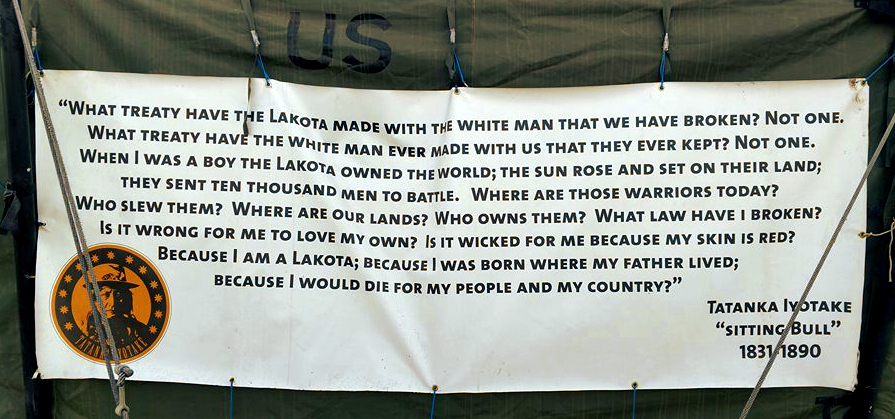
Dancers:
“Buffalo Dancer”:
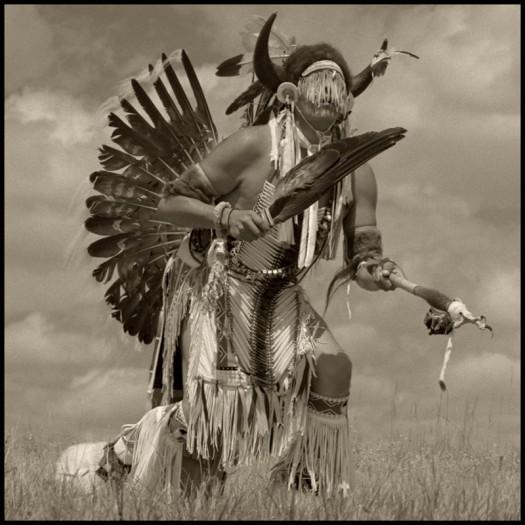
Note: By scrolling down, you can find several links to websites of various organizations who specialize in teaching about the Lakota, Dakota, & Nakota history & culture. However- for the sake of getting on with the case, let’s get moving forward, shall we?
Next Section:
Learn more:
Traditional Clothing, Food, & History
White Calf Buffalo Woman & The Seven Lakota Rites
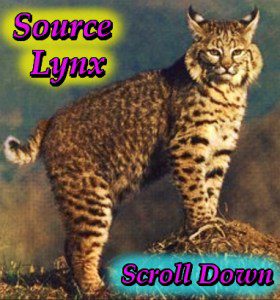
[1}: Friends of Neil Smith National Wildlife Refuge, “Tallgrass Prairie”: http://www.tallgrass.org/plants/
[2]: Rostlund, Erhard (1 December 1960). “# The Geographic Range of the Historic Bison in the Southeast”. Annals of the Association of American Geographers. Taylor & Francis, Ltd.50 (4): 395–407. doi:10.1111/j.1467-8306.1960.tb00357.x. ISSN 0004-5608.JSTOR 2561275.
[3]: Akta Lakota Museum & Cultural Center, “Sacred Buffalo”: http://aktalakota.stjo.org/site/News2?page=NewsArticle&id=8596
[4]: Akta Lakota Museum & Cultural Center, “Sacred Buffalo”: http://aktalakota.stjo.org/site/News2?page=NewsArticle&id=8596
[5]: Theodore Roosevelt National Park, “Elk Management; History of the Elk of North Dakota: https://www.nps.gov/thro/learn/nature/elk-management.htm
[6]: North-South-East-West: American Indians and the Natural World, Great Plains Tribes, “Elk; The Irresistible One”: http://carnegiemnh.org/online/indians/lakota/horses.html
[7]: Theodore Roosevelt National Park, “Elk Management; History of the Elk of North Dakota: https://www.nps.gov/thro/learn/nature/elk-management.htm
[8]: Akta Lakota Museum Cultural Center: http://aktalakota.stjo.org/site/News2?page=NewsArticle&id=8591
[9]: Native American Religion, Lakota: Concept of Wakan: http://www.thewildwest.org/nativeamericans/nativeamericanreligion/100-lakotaindiansconceptofwakan
[10]: Black Elk Speaks, pages 2-4: http://stuff.samassaveneessa.info/docs/BlackElkSpeaks.pdf
[11]: Elk Head, Keepers of The Sacred Pipe: http://www.american-tribes.com/Lakota/BIO/ElkHead.htm
[12]: National Museum of the American Indian. Do All Indians Live in Tipis? Washington DC: Smithsonian Institution, 2007. ISBN 978-0-06-115301-3
[13]: About Richard Fool Bull: http://amertribes.proboards.com/thread/464#ixzz4QZPDCSle

